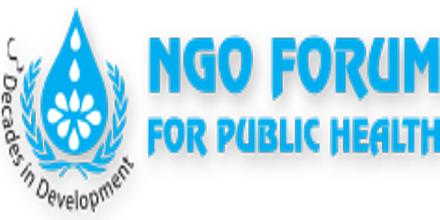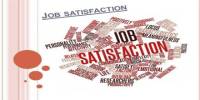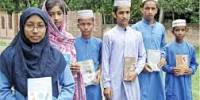NGO Forum for Drinking Water Supply and Sanitation
NGO Forum for Drinking Water Supply and Sanitation (DWSS) – one of the biggest national NGOs working on water and sanitation issues. NGO Forum is the apex WatSan body in Bangladesh. It served the poor and unserved people in WatSan sector. It started its journey in Bangladesh with the broad vision of improved public health situation. They try to serve pure drinking water in rural areas and hygienic sanitation system. They are working with several projects on several unserved areas of Bangladesh regarding supply of pure drinking water and sanitation. Thus, they try to mitigate water related diseases and unhygienic causes that leads to death.
NGO Forum for DWSS has different cells for its operational activity; NRC is one of its cells. At NRC Cell they maintain available data and information on water and sanitation related issues. Thus conduct several researches on WatSan issues. NRC is a knowledge management centre branding itself as “Centre of Excellence”, in the WatSan sector. It is now involved with diversification of multidimensional services. It conduct internship program as a knowledge sharing program. It also has a enrich library that served as the National Archive for the WatSan sector. They have a database named WatSan database. WatSan database contains all water and sanitation related news, reports, projects, articles, documents, photos, organization information, arsenic map etc. And the online library system is called as Library Information System (LIS).
NGO Forum did several projects for mitigation of arsenic, help the rural people to save themselves from arsenic related diseases. These are – “Sustainable Arsenic Mitigation (SAsMit)” and the implemented area was Matlab Upazila of Chandpur District, Bangladesh, “Integrated Community-based Arsenic Mitigation Programme” and the implemented area was100 arsenic affected unions in 34 upazilas of 20 districts under 7 Regions of NGO Forum (Barisal, Comilla, Dhaka, Faridpur, Jessore, Khulna and Rajshahi), “Deployment of Arsenic Removal Technologies (DART)” and the covered area was Darmurhuda and Sarail Upazila. It’s another project for arsenic mitigation was Columbia University Arsenic Mitigation Project (CUAMP) and implemented area is Gopalgonj sadar Upazila and Matlab Upazila of Chandpur district. I have tried to assess whether NGO Forum is able to provide safe drinking water in regions with elevated arsenic enriched groundwater for rural and disadvantaged community in Bangladesh or not.
The Organization
“NGO Forum for Drinking Water Supply & Sanitation —-National Resource Centre (NRC) Cell”
NGO Forum for DWSS – The Apex WatSan Body
NGO Forum for Drinking Water Supply and Sanitation – a national non-government organization has started its journey in 1982 in Bangladesh. It is the apex networking and service delivery NGO working for safe water supply, environmental sanitation (WatSan) and hygienic promotion programs. It concern for the unserved and disadvantaged poor communities in Bangladesh. NGO Forum keeps a good relationship with all relevant national and international NGOs, CBOs (community based organization), donor agencies and public sector ranging from the government and civil society to donor organizations and working as development partner to attain a sustainable existence.
HISTORY
United Nations General Assembly launched the International Drinking Water Supply and Sanitation Decade (IDWSSD) for the period 1981-1990. UN launched IDWSSD by realizing the global facts of water supply and sanitation that leads to high incidences of mortality and morbidity dangerously. In line with the IDWSSD NGO Forum for Drinking Water Supply & Sanitation was formed in 1982 to support and strengthen the WatSan Projects of the NGOs in the unserved and underserved areas of Bangladesh. NGO Forum for Drinking Water Supply & Sanitation is the outcome of a consultation meeting, jointly organized by the leading national NGOs and UN-Steering Committee for Water and Sanitation in Bangladesh.
Vision:
NGO Forum for DWSS started its journey in Bangladesh with a clear vision regarding water and sanitation sector of Bangladesh. Their vision is….
♦ Improved Public Health situation
Mission:
NGO Forum is a national apex networking service delivery organization in the water supply and sanitation sector dedicated to contribute public health status of the poor and disadvantaged. With a committed workforce by utilizing their vast experience and adopting software-hardware mix approaches to promote sustainable safe water supply, environmental sanitation facilities and hygiene behavior.
Goals:
♦ Ensuring access to safe water and sanitation facilities
♦ Promoting sustainable change of hygiene behavior
♦ Contributing in reduction of morbidity and mortality
National Resource Centre (NRC)
HISTORY
The National Resource Centre (NRC) is a dynamic cell starting its journey in 2001, under the shade of NGO Forum for Drinking Water Supply & Sanitation. Its aim is to be – ‘Centre of Excellence’ in the Water and Sanitation (WatSan) sector of Bangladesh. NGO Forum established NRC as a resource centre of knowledge and information, that accumulates all the information on water, sanitation, development and related environmental and hygiene issues.
It also provides a set of direct and indirect software based multidimensional support services like web base WatSan database and referral services. NRC is dedicated to provide various kinds of support services in the form of information databases, research, documentation, advisory, referral services and thus it collects documents, presents and disseminates information relevant to the sector.
Mission:
The mission of the NRC in WatSan sector is to fill in the gaps of unaddressed issues by—-
- Enhancing the knowledge base and capabilities.
- Managing information and achieving equitable access to information.
- Ensuring sustainable development and growth towards poverty alleviation.
- Enhancing and protecting quality of life as a centre for disseminating data and information.
- Act as a national archive and media centre in WatSan sector
ORGANOGRAM
Like all other organizations, NRC also maintains a centralized-authority base operational organogram. The main authority of the NRC Cell is kept on the hand of Chief of NRC. Under his authorization three direct operational officers work. Resource Centre Development officer, Associate Programme Officer, and Senior System Manager. Resource Centre Development Officer maintain resources and updates resources relevant to WatSan, even there is a Resource Chief, who handle this things. Associate Programme Officer supports the Intern and MS students, thus maintain directly the NRC Library System. The Senior System Manager mainly works as the IT support for NRC Cell, and maintain the LIS software. The organogram is shown in the appendix of this report.
NRC Website & WatSan Database:
The NRC website has been restructured radically, keeping similarity with the IRC International Water and Sanitation Centre website. All the necessary information regarding NRC activities, programs and projects have been uploaded on the website, and it could be accessible for any people from any corner of the world to get the information of NRC through it. To make the resource centre more enriched NRC has taken initiatives to develop an effective WatSan database in 2004. This database was established with an aim of systematic accumulation of water and sanitation related information for archiving purpose.
The WatSan database covers information on –
- Who is doing what, their reports, researches, achievements, organizations etc
- With huge back-end support, is being upgraded to make it more informative, user customized, and online.
Now the WatSan Database has been made online in a comprehensive and updated form with the objective of making information flow more accessible to all stakeholders. NRC hoped that through the enriched and informative online-database, it could flourish the WatSan sector by successfully meet up the query of information and thirst of knowledge of people.
NRC Newsletter:
NRC published its newsletter on the half-yearly basis. One published on June and another on December. The NRC has been doing this within NGO Forum and also in the WatSan sector transferring and sharing its generated knowledge through different angles. The NRC Newsletter mainly highlights NRC activities, national and international events relating to water, sanitation and hygiene throughout the year.
Call Centre:
Recently NRC started its call centre service. Through this service we can see the touch of modern technology. NRC has been provided the instant reply of queries of relevant organizations and individuals through its call centre. Anyone can call for query, and according to NRC’s opinion no one is ignored as far the query is relevant to the WatSan sector.
Photo Documentation:
NRC maintain photo gallery in a corner of its library section which attracts the library users. This photo gallery mainly shows how NGO Forum works with the WatSan development. A significant number of relevant photographs have been produced and put on display at the
photo gallery. Different albums on different topics are displayed column wise. It has five big albums that contain all of its photos with a unique caption. The photographs are mainly related with water and sanitation, hygiene issues and community people.
Others Services:
♦ News gallery
♦ Research paper collection
♦ IRC publications for sale
♦ Resource Centre Development Program
♦ AYAD Program
NATIONAL ARSENIC INFORMATION & SUPPORT UNIT(NAISU)
In NRC Library, there is a separate corner for arsenic related documents. And that corner is named as National Arsenic Information & Support Unit (NAISU). All types of arsenic documents are kept here for library users. At a glance a person can understand what is NGO Forum for DWSS is doing or done for arsenic mitigation. NAISU corner is arranged with documents such as—-
♦ Arsenic booklet – NGO Forum publishes booklets on arsenic. These are kept in NAISU corner of NRC library.
♦ Arsenic Bulletin – NGO Forum published arsenic bulletin. And it’s a quarterly publication by NGOF. It contains several real life stories regarding arsenic sufferings and other arsenic related issues.
♦ Arsenic Mathbarta – NGO Forum along with other organizations published arsenic mathbarta. It’s a annual publication. It mostly discussed about impact of arsenic on different sector like agricultural sector.
♦ Arsenic projects – Several arsenic mitigation projects are kept in NRC library. Some of these projects are done by NGOF itself, some are done by other organizations.
♦ Arsenic project proposals – Arsenic mitigation project proposals are also kept. But only NGOF’s project proposals are kept here.
♦ Books on arsenic – NRC keeps its own publications as well. They published several books on arsenic. Such as “Procholito Chorai Arsenic”, “Arsenicosis Rog Chinhitokoron Shohayika” etc.
♦ Articles on arsenic – Several articles published in different newspapers and magazines regarding arsenic. NRC collect these articles, thus make it available for readers and users in a sorted way.
♦ IRC publications for sale – International Water & Sanitation Centre published several books on water and sanitation related issues every year. As IRC is in network with NRC, thus NRC has some of its publications in their collection. They kept these IRC publications for sale.
Project
“Impact Analysis of Arsenic Mitigation Projects of NGO Forum”
Arsenic is a global environmental issue. Several countries’ people are suffering from arsenicosis diseases. Arsenic has been found in several areas of Bangladesh as well. Thus international and national organizations are working since very long period of time for mitigating arsenic from drinking water. NGO Forum for Drinking Water Supply & Sanitation, a non-governmental organization working in WatSan sector in Bangladesh is also trying their best to mitigate arsenic. They find out arsenic contaminated area in rural side of Bangladesh, and work for mitigating arsenic, and in the mean time work for the poor rural people of Bangladesh who suffers for pure drinking water. NGO Forum for DWSS has done some projects for arsenic mitigation; their arsenic cell is also conducting some on going projects. In this project, I have talked about three arsenic mitigation projects and its impact on those area and try to done the SWOT analysis on the basis of those arsenic mitigation projects conducted by NGO Forum for DWSS in collaboration with other organization.
DESCRIPTION OF THE PROJECT
Objectives:
The primary objective of this report is to relate my academic knowledge and learning with the practical aspects. Bachelor of Business Administration (BBA) program provides us knowledge regarding theories and models whereas internship program gives us practical job experience. The objectives of this report are as follows:
♦ Understanding the job environment, functions and their business strategies.
♦ Have a clear knowledge about the organization (NGO Forum) and NRC Cell.
♦ To know how NGO Forum worked on these several projects for arsenic mitigation
♦ To assess the impact of their arsenic mitigation projects.
♦ To improve my personal as well as professional skill.
♦ Narrating experience in working with an organization that relates to the development sector.
JOB RESPONSIBILITIES
My main job responsibility was library management. As I have worked at their National Resource Centre (NRC), thus my main responsibility was to maintain their online library system, as well as other library related activities. I get the opportunity to deal with several borrowers or users of this library. I also gather knowledge in IT sector as it is an online system. NRC gives me a huge floor for gathering a lot of professional experiences and treated me as a member of NRC. My detail job responsibilities are describing in below –
LIBRARY MANAGEMENT
Steps of Book processing:
Step 1 – Making the list of books:
In every year NRC has a specific amount of budget for buying new books for the NRC library. I have made the list of books that are going to buy for library. In time of making this book list we need to face some restrain and that is, we need to buy a specific number of books and also have to use the whole amount of the budget. Books name are collected from online as well as from the bookstores in new market. NRC employees can also give any requisition of book if they needed. Before final selection of books I need to check whether those books are already having in library or not. For doing this job I use the LIS (Library Information System), that makes my job simpler and easier.
Step 2 – Writing the primary information of books:
After listing of new books, I have to write down the primary information of each book in doc file. The information-writing format is given in “Appendix-B”. Beside this information I also need to write down the abstract of the books, so that the reader can easily understand about the content of the book. Over all these information facilitate the user to find out his/her desired book.
Step 3 – Entry of books in online LIS (Library Information System):
I put books information into LIS from the doc file that I have prepared before. As soon as I entry the book in LIS, any people can see the book and its info by clicking on the name of the book through NRC library website. I have already given more than 270 entries of new books in online LIS.
Step 4 – Give MFN and accession number to each book:
MFN number refers manufacturing number and accession number means number of copy of a particular book. As soon as I have entry a book in to LIS, the book will get a unique MFN and accession number. Then I put in writing these numbers in a preformed page to keep a proper record.
Step 5 – Generate bar code:
In this step, I have generated bar code for each book. For generating bar code I used LIS that makes my job easier. I just put the MFN and accession number and then bar code will be generated automatically.
Step 6 – Pasting bar code and MFN no.:
Now I print bar code and MFN number and past those to its respective book. There is a certain place in each book for pasting these numbers. I need to be very6 careful, as simple mistake can change the books track.
Step 7 – Scanning book’s cover page:
In this pace, I have scan the front cover and back cover page of each one book and after that upload those scanned picture in online Library Information System. This system facilitates the user to see the picture of books along with its others necessary information. I have scanned more than 2,750 books.
Step 8 – Arranging books in shelve:
Finally after the completion of all the steps mentioned above, books are ready for transferring into library bookshelf. Books are arranged in sequence according to the MFN and accession number.
ARSENIC
Introduction:
Arsenic is more commonly found as arsenide and in arsenate compounds, several hundred of which are known. Arsenic and its compounds are used as pesticides, herbicides, insecticides and in various alloys. Water supply in Bangladesh is predominately based on groundwater sources. Water is universal solvent and capable of dissolving almost everything to a certain extent but the possibility of having arsenic at high concentration had never been considered seriously in the past. Unfortunately, arsenic contamination of shallow aquifers in many parts of the country has made shallow tubewell water unsafe for drinking.
Fundamental of Arsenic:
- Arsenic is widely distributed throughout the Earth’s crust, most often as arsenic sulfide or as metal arsenates and arsenide. It is the 20th most abundant element in the earth’s crust.
- Arsenic is introduced into drinking-water sources primarily through the dissolution of naturally occurring minerals and ores.
- Most important route of exposure is through the oral intake of food and beverages. There are a number of regions where arsenic may be present in drinking-water sources, particularly groundwater, at elevated concentrations.
- Arsenic in drinking-water is a significant cause of health effects in some areas, and arsenic is considered to be a high-priority substance for screening in drinking-water sources.
Positive impacts:
- Trying to increase global awareness of the problems associated with high arsenic groundwater of geogenic origin
- Working for arsenic mitigation at Matlab Upazila of Chandpur District, Bangladesh.
- Exchange experiences regarding feasibility of mitigation options.
- Trying to develop a sustainable option for safe drinking water for rural and disadvantaged community
- Targeting safe aquifers in regions with elevated arsenic enriched groundwater of geogenic origin for installation of community hand tubewells.
Concerned issues:
- Global component for advocacy regarding arsenic mitigation
- Multidisciplinary action research such as several field trial is done in Matlab Upazila
- Under this project activity awareness raising among people regarding arsenic has given importance.
- Field implementation, direct field works are done under this project.
- Capacity building based on participatory approaches, monitoring, management and establishment of water safety plan for the promoted option in collaboration with the local government and other stakeholders.
- Exchange of information regarding arsenic mitigation process, arsenicosis disease.
- Conceptualization of the mitigation option
- Replication-trials for validation to measure their activity for mitigating arsenic in this area.
(ii) Deployment of Arsenic Removal Technologies (DART):
NGO Forum is working with UNICEF to implement the DART project activities in two upazilas namely Damurhuda and Sarail under Chuadanga and Brahmanbaria districts. Two unions were selected from each of the upazila as intervention areas on the basis of high arsenic contamination in tubewell water. DPHE is performing overall supervision of this project. NGO Forum through its 14 regional offices has been working to mitigate the arsenic problem by implementing different projects and programmes since 1997. Within the DART intervention area, each of the 400 households are considered as a unit. Each unit is further divided into 8-10 clusters and each cluster consists of 40-50 households, which in fact depends on the community size. The clusters will serve as the fundamental group for the participatory community planning interventions. The four DART Unions in Damurhuda and Sarail Upazilas contain 27,025 households under 62 units.
NGO Forum for Drinking Water Supply & Sanitation started the DART project activities in Darmurhuda and Sarail Upazila in September 2006 under the 1st phase and the work continued to May 2007. The activities were further extended up to March 2009.
Positive impacts:
- Trying to distribute and assess different arsenic removal technologies for sustainable use by the community people.
- Several technologies are used; like ALCAN, READ-F, SONO filters based on household and the community-based SIDKO filter.
- Use the cluster sampling method to decide households
- Coverage of household is huge in number for this particular project.
Integrated Community-based Arsenic Mitigation Programme :
The “Integrated Community-based Arsenic Mitigation Programme in 100 Unions” project addresses the arsenic poisoning problem of the 0.42 million households in rural Bangladesh.
The project is in compliance with the National Policy for Arsenic Mitigation 2004 of Bangladesh Government. The focus of the project are to improve community awareness on various aspects concerning arsenic contaminated water and alternative arsenic-free safe water, to increase number of capable and aware partners and groups to respond to arsenic mitigation needs of the target communities, to provide fully operational and accessible alternative arsenic-free safe water options, to increase access to proper diagnosis facilities for arsenic affected patients and to improve standard of living for arsenicosis affected patients and families. 100 arsenic affected unions in 34 upazilas of 20 districts under 7 Regions of NGO Forum (Barisal, Comilla, Dhaka, Faridpur, Jessore, Khulna and Rajshahi). This project duration is from January 2006 to December 2009.
Positive impacts:
- Trying to improve quality of life for arsenic affected communities.
- Improving level of awareness among arsenic affected population
- Put emphasis on arsenic contaminated water, alternative arsenic-free safe water sources and other mitigation options and remedial measures against arsenic poisoning.
- Strengthened capacity and enhanced knowledge of partners and societal groups including target communities to deal effectively with the arsenic crisis.
- Trying to increase the overall coverage of arsenic-free safe water options with fully accessible and functional alternatives, and provisions for appropriate diagnosis, management and rehabilitation of arsenicosis patients.
Concerned issues:
- Training on arsenic, how to be safe from arsenicosis diseases.
- Creating public awareness regarding arsenic.
- Developing communication and provide information on arsenic.
- Installation of alternative safe water technologies and provide information on how to practice these technologies.
- Distribution of maintenance tools & technology manuals to the people of these areas.
- Water quality testing for arsenic of these areas.
Columbia University Arsenic Mitigation Project (CUAMP):
The project is implementing in the Gopalgonj sadar Upazila and Matlab Upazila of Chandpur district with the financial assistance from Columbia University of New York. The goal of this project is to assess factors responsible for community involvement in development projects to ensure sustainability by implementing three different models of community involvement. A total number of 10000 HHs were selected for baseline survey. It was estimated that the project with financial support from Columbia University would cover the installation cost of 342 safe water options in selected 114 villages to get an in-depth understanding about three different models of community involvement in both the upazilas.
This arsenic mitigation project duration is 2007 to May 2010.
Positive impacts:
- Trying to assess factors responsible for community involvement in development projects to ensure sustainability by implementing three different models of community involvement.
- Trying to complete analysis of dynamic models of centralized and decentralized provision of public goods.
- Randomly choose villages in which will implement interventions and households in each village, thus all villagers get equal priority.
- Consulting with partner NGOs about the design of interventions to help provide safe water, thus the distribution of safe water is effective.
- As several surveys are done for this project and comparison among empirical results to predictions of models and revise models bring more authenticity of the project.
Concerned issues:
- Social mobilization to mitigate arsenic.
- Demand creation of arsenic removal technologies among people.
- Distributing arsenic removal household filter on trial basis to create demand for these filters.
- Distribution of filters as per community demand
- Monitoring the acceptance and use of filters within the community of these areas.
- Water quality monitoring of filters that are provided by them to the people
Concerned issues:
- Concerned about public health.
- Finding out sources of water for drinking & cooking purpose.
- Creating networks & community to prevent arsenicosis diseases.
- Build arsenic awareness among people through communication, information sharing.
- Focus Group Discussion and take right decisions to prevent and mitigate arsenic.
- Development communication through court yard meeting, tea stall meeting, religious leader meeting, community meeting.
CRITICAL FINDINGS
After going through these projects on mitigating arsenic , I have some critical findings regarding their projects. a Donors are very important for NGO Forum for DWSS as they are dependent on donors for financial aid of any project regarding arsenic mitigation. a Mostly they work with other organizations for these projects as they are lacking of effective man power.
- They are using several tools for communicating, awareness building, but not yet done any drama regarding arsenic. If they do so, then people can realize arsenic and its bad effects.
- They are concentrating more on some specific regions of Bangladesh, but they should concentrate on less arsenic founded areas also, rather arsenic problem will increase severely in those areas.
RCOMMENDATION
After making this report on arsenic mitigation projects of NGO Forum for DWSS, I have some recommendations for them.
♦ Should increase effective man power for arsenic mitigation projects.
♦ Should focus on other left over regions where arsenic rate is high.
♦ Should arrange drama on arsenic as promotional tool.
♦ Should find out more donors for this type of projects as well as concentrating on present donors.
♦ Should improve training, monitoring and evaluation systems for their projects.
They are trying their best to mitigate arsenic, and save people from arsenicosis diseases. But they need continuous improvement to hold and maintain their current activities against arsenic and they need innovative ideas as well. Thus I have recommended this things for NGO Forum for DWSS.
C0NCLUSION
NGO Forum for Drinking Water Supply & Sanitation is an NGO that works for the unserved people in WatSan sector. It is a renowned non-government organization in Bangladesh in the field of water and sanitation. It has done several projects for better water supply, water quality testing, hygienic sanitation, and as well as arsenic mitigation in several areas of Bangladesh. They have done these projects in collaboration with other national and international organizations. So far their success story in the field of WatSan is remarkable in Bangladesh. But they share success credits with the co-operative organizations that help them to done their projects successfully. NGO Forum is grateful as they get the opportunity to work for the rural as well as urban deprived poor people.
















